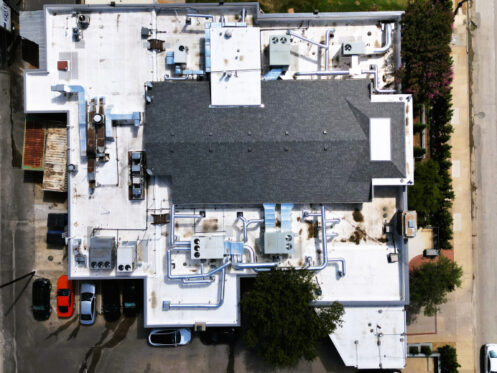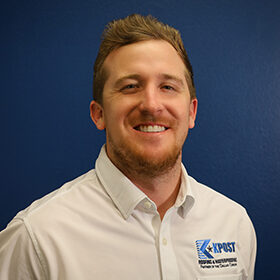With so many potential issues with your commercial roof, you may not be sure what signs you need to look out for. You can keep your roofing system ready for adverse weather situations with a solid commercial roof maintenance checklist. Without proper preventive maintenance severe weather can damage your commercial roof and call for a costly roof replacement.
Here is a commercial roof inspection checklist to help you avoid expensive repairs caused by adverse weather.
1. Record Who Goes On the Roof
Record these details to track specific issues regarding different areas of your roof:
- Who goes up on your roof
- When they were on the roof
- Why they were on the roof
- Where they were on the roof
2. Note Down the Conditions of Everything You Look At
Use a scoring system to scale the conditions of various components on your roof. Here is an excellent example of how to rate and prioritize roof conditions:
- Good – No action needed
- Fair – Monitor for now
- Bad – Immediate action needed
When action is needed, note down the kind of action required and where on the roof they are located. Also, take pictures of the damage.
3. Have an Appropriate Toolkit
During a roofing inspection, it is vital to have a tool kit with these things inside:
- An inspection checklist
- A pen/pencil and notebook or writing pad to take notes
- Tape measure
- A camera for taking pictures or roof plans/aerial photos
- A flashlight for dark areas
There are also plenty of mobile apps to give you various measurements to assist with the inspection.
4. Check the State of the Walls
Check your interior walls’ state to see if there are signs of mold, such as dark spots or peeling paintwork. By checking your interior walls for moisture, it’s possible to mitigate the growth of mold and mildew to prevent further leaks from spreading. Wet walls can compromise your building’s insulation and increase energy bills, so be sure to call your roofer for immediate repairs.
5. Look Out for Damp Areas Around Vents and Chimneys
If you feel damp areas around chimneys and vents, you may need to call your roofer to stop the moisture right away. In most cases, damaged or worn flashing and sealing are the primary causes of leaks around vents and chimneys.
6. Check if There Is Proper Ventilation
Inspect the attic space to see if there are cracks in the sheathing and rafters or sagging decking. If there is light showing through anywhere in your roof, then there could be a serious roof leak. A roof specialist may also use special infrared equipment to detect any moisture accumulation in the attic, which is often an indicator of poor ventilation.
7. Check for Leaks
Sometimes even the smallest leaks can grow into significant problems. Make sure your roofing inspection is thorough enough to uncover all possible leaks. Undetected tiny leaks are usually the top cause of maintenance issues for commercial roofs. Leaks can occur in several places imaginable, including around vents, chimneys, and skylights. You should also inspect areas around roof-mounted HVAC systems for leaks and other damage.
8. Visible Damage and Debris
Inspect the exterior of your roof and look out for visible damage and debris buildups, such as leaves and tree branches. If you see obvious signs of damage on your roof, be sure to schedule prompt repairs to prevent further water damage. Blocked or broken gutters and downspouts may also interfere with water flowing away from your building and should be cleaned as soon as possible.
9. Check Other Exterior Roofing Components
Inspect your roof’s flashings, fascia, vents, chimneys, decking, and drip edges. See if they are damaged or worn out due to normal wear and tear. If any part is missing, damaged, or has corrosion, rust, or rotting, you should have it replaced as soon as possible.
10. Look for Any Ponding in Flat Roofs
If your commercial roof is flat or low-slope, look for:
- Ponding
- Punctures
- Holes
- Blisters in the material
Continuous ponding can gradually deteriorate the roofing material and cause leaks. If you see anything pulling away from the roofing system, it should be a cause for concern.
When Action Is Needed
After using this checklist, you can decide if the damage is substantial enough to warrant a more detailed professional inspection. It’s always advantageous to hire a professional roof inspector biannually and following a severe storm. At KPost Company, we proudly offer expert commercial roofing services in DFW Metroplex and Ft. Worth. Contact us today to schedule your professional roofing inspection!

